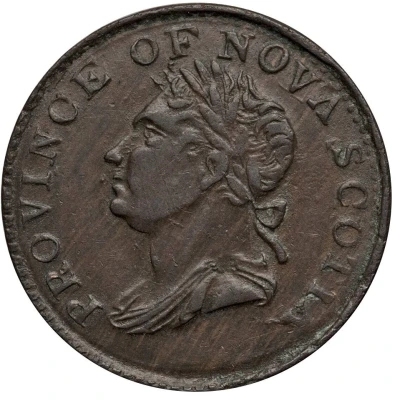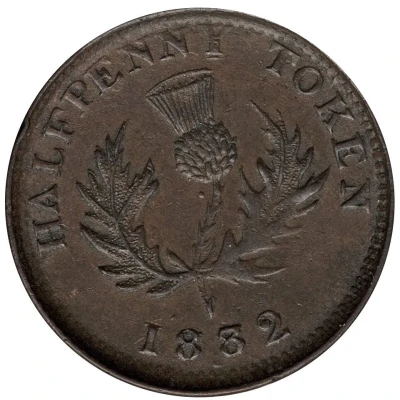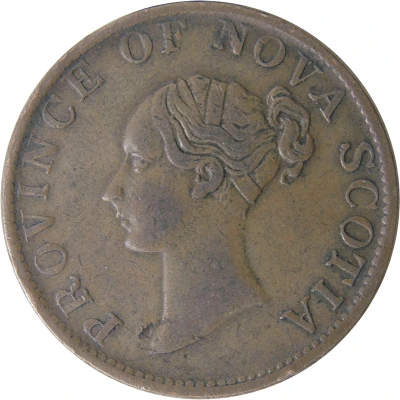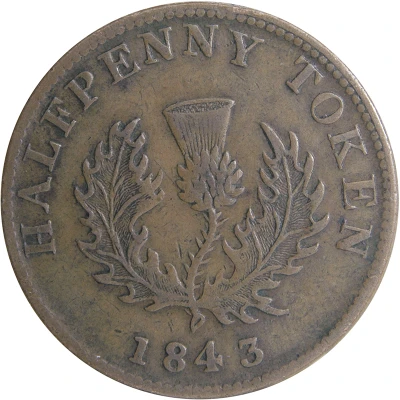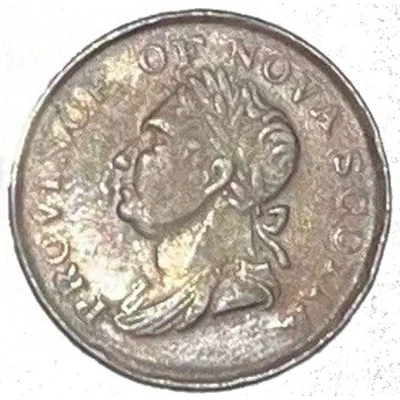
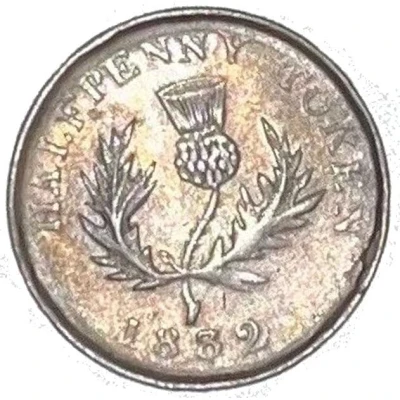

½ Penny Token - George IV counterfeit
1832 year| Copper | 6.6 g | 28.5 mm |
| Issuer | Nova Scotia (Canadian provinces) |
|---|---|
| Type | Token |
| Year | 1832 |
| Value | ½ Penny (1⁄480) |
| Currency | Pound (1812-1860) |
| Composition | Copper |
| Weight | 6.6 g |
| Diameter | 28.5 mm |
| Shape | Round |
| Orientation | Coin alignment ↑↓ |
| Demonetized | Yes |
| Updated | 2024-10-04 |
| Numista | N#98227 |
|---|---|
| Rarity index | 92% |
Reverse
A thistle surrounded by lettering, date below.
Lettering:
HALFPENNY TOKEN
1832
Edge
Engrailed
Comment
Weight: 5.8 - 7.5gDiameter: 28.2 - 28.9mm
NS-3D1 Obv. 3 locks of hair, 8 jewel pin, large die break
Rev. Left thistle leaf has 16 points, a new left leaf sprout overlays the main thistle stem
NS-3D1 Obv. 3 locks of hair, 8 jewel pin, large die break
Rev. Left thistle leaf has 14 points, a new left leaf sprout is behind the main thistle stem
The reverse of NS-3D2 has a very weak 11th point that may be overlooked. Reverse was extensively reworked. Th over-dating, especially on the "3" was corrected.
Interesting fact
One interesting fact about the Token ½ Penny Token - George IV (counterfeit) 1832 from Nova Scotia (Canadian provinces) made of Copper weighing 6.6 g is that it is a rare and valuable coin. It is considered a "counterfeit" coin because it was not minted by the official government mint, but rather by a private individual or group. Despite its origins, the coin still holds significant value to collectors due to its rarity and historical significance.
